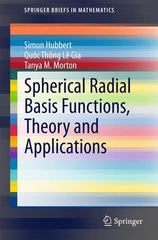Question
2. Given b = (-1, 1, 1) and u = (0, 3, 3), represent u as the sum of two vectors one of which is
2. Given b = (-1, 1, 1) and u = (0, 3, 3), represent u as the sum of two vectors one of which is parallel to b and the other one orthogonal to b.
3. Sketch a regular tetrahedron with vertices O(0, 0 , 0), A(k, k, 0), B(k, 0, k), C(0, k, k) where k is a positive real number. Use vectors to find:
a. the angle between AB (vector) and AC (vector)
b. the area of the face ABC
4. Find parametric equations for the line passing through P(1, 0, 2) that is parallel to the plane x + 2y + 3z = 5, and perpendicular to the line x = 5, y = 1 + t, z = 1 + t
5. Find the equation of the plane that passes through the points P(1, -2, 1) and Q(2, 5, 6) and is parallel to the line y = 2x + 1 in the xy-plane.
6. Find the standard equation of the sphere with the center P(-3, 2, 4) that is tangent to the plane given by 2x + 4y - 3z = 8.
Step by Step Solution
There are 3 Steps involved in it
Step: 1

Get Instant Access to Expert-Tailored Solutions
See step-by-step solutions with expert insights and AI powered tools for academic success
Step: 2

Step: 3

Ace Your Homework with AI
Get the answers you need in no time with our AI-driven, step-by-step assistance
Get Started


